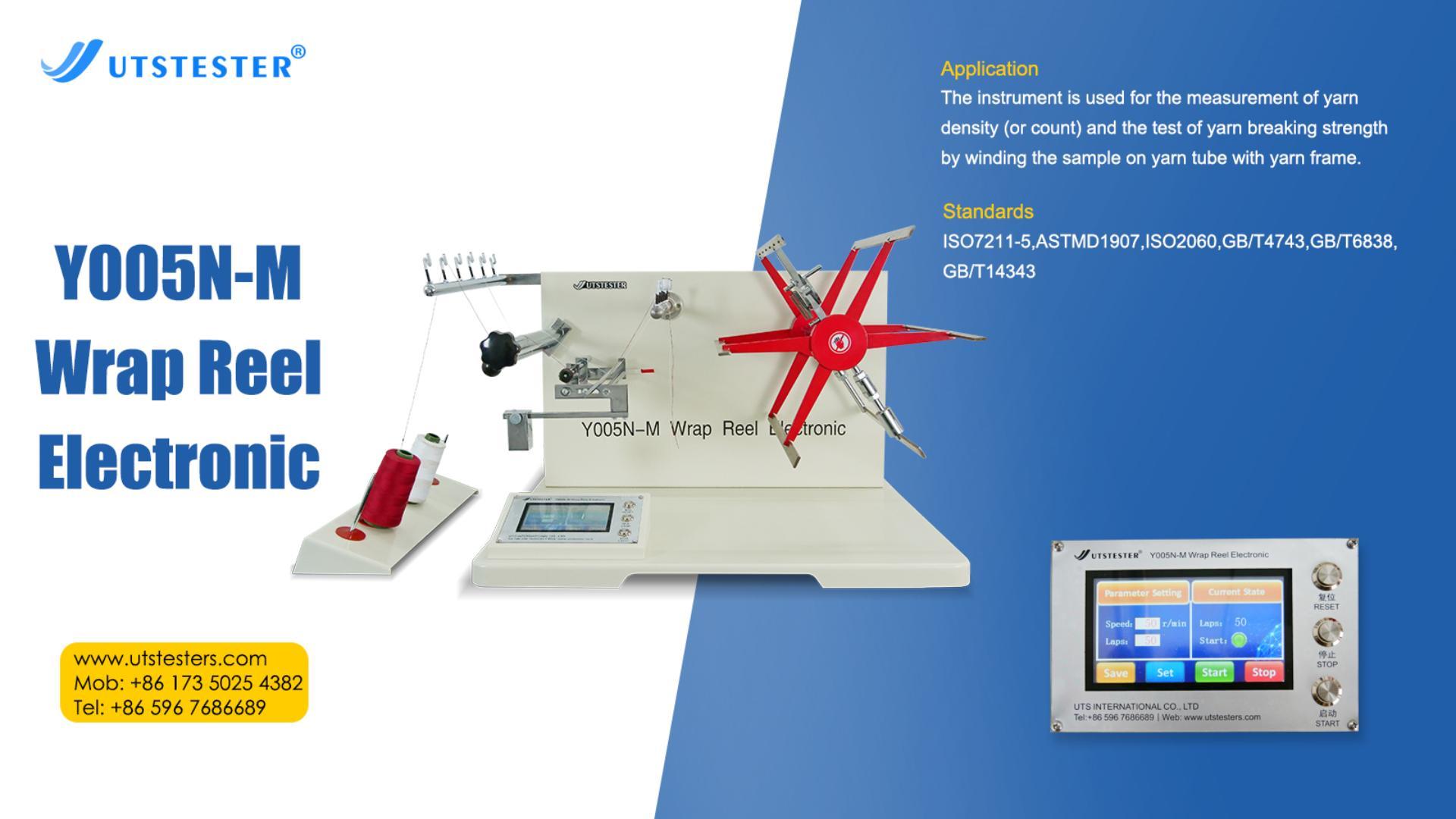The
прибор для измерения длины пряжи
Это ключевой прибор, используемый в текстильной промышленности для точного измерения длины пряжи. Он широко применяется в производстве пряжи, контроле качества, а также в научно-исследовательских и опытно-конструкторских работах. Ниже приведены стандартные рабочие процедуры и меры предосторожности:
I. Подготовка
1. Проверка оборудования
(1) Убедитесь, что прибор расположен горизонтально, чтобы избежать вибрации или наклона, влияющих на точность.
(2) Проверьте чистоту и отсутствие износа колеса нитенаправителя, натяжного устройства, счетчика и других компонентов.
(3) Откалибруйте прибор (см. руководство производителя), чтобы убедиться, что погрешность измерения находится в допустимом диапазоне (обычно ≤±0,5%).
2. Экологические требования
Температура: 20±2℃, влажность: 65±5% (не допускайте впитывания влаги или высыхания пряжи, приводящего к изменению длины).
3. Образец пряжи
Отбор проб должен соответствовать стандарту (например, GB/T 4743), необходимо удалить поверхностную ворсистость или узелки, а также не допустить влияния на натяжение.
II. Этапы операции
1. Загрузка образца
(1) Закрепите трубку для пряжи на разматывающей рамке и поочередно проведите пряжу через крючок нитенаправителя и натяжитель (натяжение установите в соответствии с типом пряжи, например 0,5±0,1 сН/текс для хлопчатобумажной пряжи).
(2) Убедитесь, что пряжа не запуталась и не перекручена, а ее конец закреплен на зажиме намоточного рычага.
2. Настройка параметров
Предустановленная длина: введите целевую длину измерения (например, 100 метров). Для некоторых приборов требуется задать количество витков обмотки (длина окружности × количество витков = целевая длина).
Регулировка скорости: выберите низкую скорость (например, 30 м/мин), чтобы уменьшить колебания натяжения. Высококачественную или хрупкую пряжу необходимо дополнительно размотать.
3. Начните измерение.
(1) Нажмите кнопку «Пуск», прибор автоматически намотает пряжу и произведет подсчет.
(2) Проверьте, стабильно ли натяжение нити. Если нить рвётся или соскальзывает, остановитесь и немедленно отрегулируйте натяжение.
4. Регистрация данных
Достигнув заданной длины, прибор автоматически останавливается и записывает фактическую длину на дисплее (например, 100,2 метра).
Повторите измерение 3–5 раз, чтобы получить среднее значение и повысить точность.
5. Завершить операцию
Разрежьте пряжу, извлеките образец и очистите инструмент от остатков волокна.
III. Примечания
1. Контроль натяжения
Слишком сильное натяжение приведёт к растяжению пряжи, а слишком слабое — к её ослаблению. Натяжение пряжи необходимо регулировать в зависимости от её материала (например, химическое или натуральное волокно).
2. Неправильное обращение
(1) Если отклонение длины превышает 1%, проверьте калибровку натяжителя и убедитесь, что пряжа не проскальзывает.
(2) Регулярно проверяйте точность прибора с помощью стандартного образца пряжи (например, калибруйте после каждых 50 измерений).
3. Техническое обслуживание
Ежедневно очищайте детали нитенаправителя, ежемесячно смазывайте подвижные соединения и ежегодно проводите комплексную проверку у специалистов.
IV. Примеры применения
Контроль качества: Измерьте разницу между фактической длиной пряжи и номинальной длиной и рассчитайте отклонение веса на 100 метров.
Регулировка процесса: оценка равномерности намотки на моталке с помощью нескольких измерений.

Электронная почта:
hello@utstesters.com
Прямой звонок: + 86 152 6060 5085
Тел.: +86-596-7686689
Веб:
www.utstesters.com
 +86 152 6060 5085
+86 152 6060 5085





 English
English русский
русский español
español português
português










 hello@utstesters.com
hello@utstesters.com hello@utstesters.com
hello@utstesters.com +86 152 6060 5085
+86 152 6060 5085 +8615260605085
+8615260605085